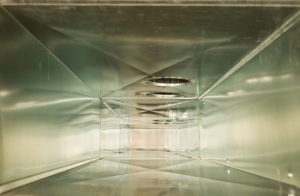 Though seldom seen up close, the duct material installed in your home matters. The type and material may vary according to location, the specific purpose of the duct, and the cost. It’s also important to note that the entire volume of cooled or heated air circulating through your house passes through HVAC ductwork multiple times each day. Therefore, the design of ductwork and the materials used play an important role in maintaining healthy indoor air quality, as well as controlling indoor temperatures.
Though seldom seen up close, the duct material installed in your home matters. The type and material may vary according to location, the specific purpose of the duct, and the cost. It’s also important to note that the entire volume of cooled or heated air circulating through your house passes through HVAC ductwork multiple times each day. Therefore, the design of ductwork and the materials used play an important role in maintaining healthy indoor air quality, as well as controlling indoor temperatures.
Here are types and functions of different duct materials:
- Sheet metal is the most common and most durable type of duct. Utilized for both supply ducts as well as returns, metal ducts are formed in rectangular or round shapes and are typically available in standard sizes to accommodate most installations. The smooth, nonporous, internal surface of metal ducts are also considered more hygienic, as mold growth and bacteria are less likely to proliferate. On the cost side, sheet metal is usually the most expensive option, but it’s also generally the most durable and long-lasting duct.
- Fiberboard ducts are constructed by gluing boards composed of glued fiberglass strands. Less costly than metal ducts, fiberboard is available in square or rectangular shapes only. The sound-deadening qualities of fiberboard reduces noise from circulating air and also provides some insulating value. Though the material is easily cut to fit any installation, the rough internal surface is more susceptible to mold growth and bacteria if high humidity is present in the airflow.
- Better known as “flex duct,” flexible duct material is fabricated with a round, internal steel-spring core covered by plastic film. Flexible ducts can be insulated effectively with glass-wool material that’s shaped and sized to fit all common diameters. As the name implies, flex duct can be bent and twisted to fit installations where rigid metal or fiberboard could not be utilized. Though adaptability is a plus, the materials utilized are generally not considered very durable over the long term of many years but the newer products are much better than the older ones.
Ask the experts at Hansberger Refrigeration and Electric Company for more information about choosing the right duct material for your HVAC system.

